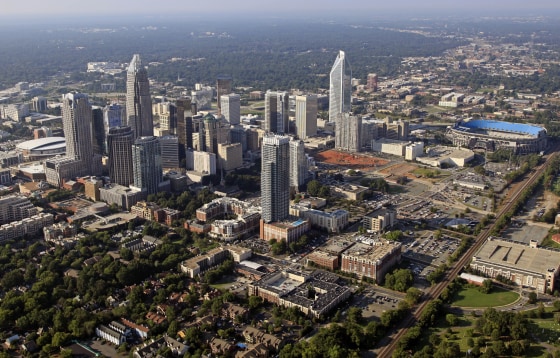In the 50 years since the voting rights march from Selma, Alabama to Montgomery, the American South has seen remarkable changes. Those changes can be measured in people – and dollars.
In the 1960s, the South was a place African Americans fled, seeking better jobs and better lives in the North in what was known as the Great Migration. But in recent years that flow has switched and led to what’s become known as the Great Reverse Migration, with large numbers of African-Americans moving South again.
The numbers help explain why. The higher poverty rates that African Americans once experienced in the South have flattened out considerably since the 1960s.
In 1969, 44% of African-Americans in the 16 states that comprise the South lived in poverty, according to the U.S. Census. Compare that to 24.3% in the Northeast, 25.4% in the Midwest and 25% in the West.
Leaving the South, in other words, was not just about leaving behind the legacy of Jim Crow, it was about better opportunities elsewhere.
But by 2013 the numbers looked very different. Only 26.8% of Southern African Americans lived in poverty. That’s still high, especially since the national figure is 15.4%, but it’s not much higher than it is for African Americans in other regions in the country – and it’s lower than some. In the Northeast, the figure is 23.6%. In the West it is 24.3%. In the Midwest, the figure was 32.6%.
That Midwestern figure is particularly significant. During the Great Migration, many African Americans came north for factory jobs, like those in the auto industry in the Midwest. Those jobs have been hammered hard in the last decade as manufacturing crashed.
And these numbers apply to Alabama as well. In 1969, 52.9% of AfricanAmericans lived in poverty in Alabama. The number is 31.4% today. In 1969, only 22.2% of African Americans in Michigan lived in poverty. Today its 34.8%.
Those are big shifts.
They aren’t the only numbers that matter, of course. Even with all those changes the desire African Americans have to move back to the South says something about the other changes that have reshaped the region as well. Better jobs and higher incomes are nice, but not if one is worried about the racial climate or personal safety. Clearly the South is a different place now, than it was in 1965 when the march from Selma to Montgomery was seen as a dangerous act of defiance.
But in a larger sense, the story of the Great Reverse Migration and the New South is an economic one. And it is remaking the region in the 21st Century.
